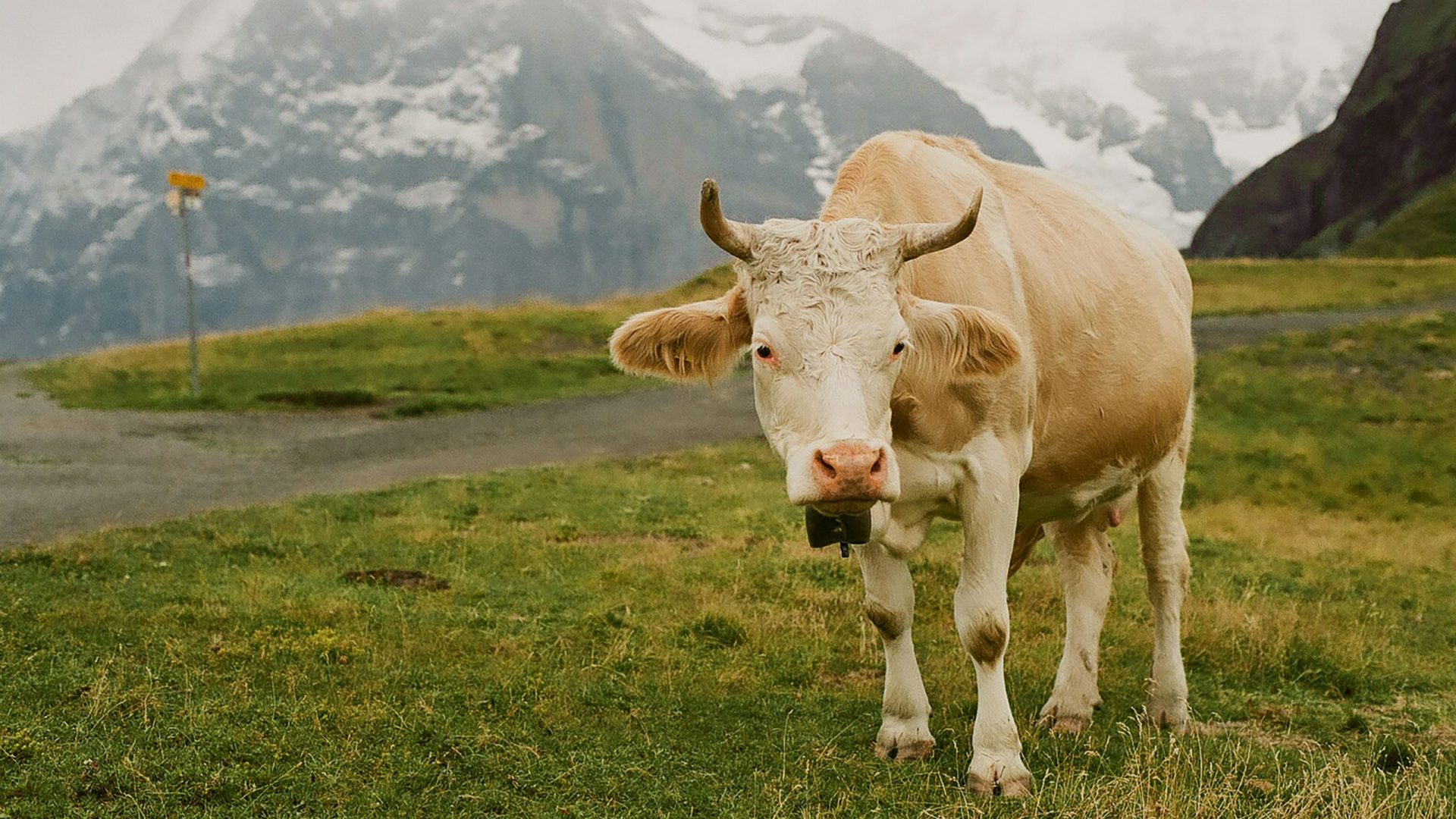
Transhumance, an ancient nomadic herding practice, has garnered the attention of food-focused adventure travelers. Can tourism bring it back into the local consciousness and culture without exploiting it?


Transhumance, an ancient nomadic herding practice, has garnered the attention of food-focused adventure travelers. Can tourism bring it back into the local consciousness and culture without exploiting it?
Every spring, Italian herders hike their cattle up into the Biellese mountains to graze fresh grass for the summer months. As they pass through alpine towns and villages, their bells clang so loudly, the clatter can wake up the whole town. But if you ask Max Jones, this tradition, called the transhumance, is a welcome racket.
“There’s an instinctive desire to come outside and to look,” he says, adding that something about it feels timeless. “Hearing those bells and seeing the herds completely grounds you to the moment.”
Jones is founder of Up There the Last, a project that hosts an annual trip to experience transhumance, be immersed in hyperlocal tradition, and visit with artisan food producers. He has worn many hats in the food business, including spending time as a cheesemonger in London. But his interest in this ancient practice goes back to his childhood, when he often visited his mother’s hometown of Biella, Italy, and spent carefree days walking in the Alps and snacking on fresh cheese and salami made nearby.
Transhumance is an ancient way of farming, where shepherds move with their flocks or herds as they graze. It’s not necessarily efficient or cost-effective to raise livestock this way anymore, at least not at scale. Jones first started taking small groups of travelers to Biella last year, but he doesn’t just want people to experience a cool old thing and then go home. He hopes the journey—and the learning opportunities with artisans before and after the trek—can break their understanding of food production, and rebuild it in a healthier way.
“The transhumance represents total connection to the now,” Jones says. “There’s nothing else like it.”
Transhumance travel seems to be gaining steam in small ways, with a handful of tour operators around the world offering small group trips to participate. It’s easy to see why—the practice of moving livestock on foot is pretty rare to come by, and it’s an unrecognizable practice from the perspective of an average modern workday.
Aside from Jones’s trips, tour operator Village Ways runs an 11-day trip featuring two days of trekking with Anwal shepherds and their sheep in the Himalayas. Pannier offers a cycling trip following herds of cattle through France, Spain and Andorra.
Manisha Pande, managing director of Village Ways, says that transhumance trips with the Anwal shepherds have “raised pride in the community about the importance of their contribution to rural life.” Aside from financial support, the tourism partnership has also provided the shepherds with gear like tents, shoes, sleeping bags, and headlamps for their long journeys to the glaciers. Ultimately, trips like this can help to sustain long-standing traditions, she says.
“The traditional practices of organic farming and keeping bees and livestock are important sources for livelihood, and the role of the shepherd community in preserving these practices is very instrumental,” she added. “Tourism brings in the much-needed additional income to the villages to support these main traditional activities and preserve rural life and communities like the Anwals.”
As much as transhumance can be a ‘medicine’ for the uber-connected way of life today, Jones says it’s also important that we don’t over-romanticize it, or fetishize living off the land, which can be reductive and offensive. “It’s incredibly difficult,” Jones says. “It’s a very, very hard life, and it warrants respect and actual, deep understanding. I think that’s why, right now, people live this idea of herding and connection to the land through animals, because there’s a kind of innocence there and the heritage there, which has been uncorrupted.”
So, how do travelers fit into that balance without destroying that innocence? It’s a tricky question. Jones participated in transhumance for several years before bringing guests for the first time and said he’s deliberated significantly over whether it’s right to bring people on tours.
“We have to be so careful because it’s so special,” he says. “The worst possible thing that we could do is start throwing in a bunch of tour guides and tour operators, about having, like, an ‘authentic experience’ with the transhumance, because it will commodify something which is absolutely freaking sacred.”
Ultimately, people need to become more connected to their food, he says, so he has determined that a transhumance-focused trip can do far more good than harm if it’s done well. He offers significant discounts on the trip to young people who are interested in getting into farming or food production.
He wants the transhumance to provide an “absolute lightning bolt of realization of how wrong we are at engaging with food nowadays,” he adds. “it’s ancient, it’s honest, and it’s real—which is why people are so into it.”
***
Adventure.com strives to be a low-emissions publication, and we are working to reduce our carbon emissions where possible. Emissions generated by the movements of our staff and contributors are carbon offset through our parent company, Intrepid. You can visit our sustainability page and read our Contributor Impact Guidelines for more information. While we take our commitment to people and planet seriously, we acknowledge that we still have plenty of work to do, and we welcome all feedback and suggestions from our readers. You can contact us anytime at hello@adventure.com. Please allow up to one week for a response.

Kassondra Cloos is a travel journalist from Rhode Island living in London, and Adventure.com's news and gear writer. Her work focuses on slow travel, urban outdoor spaces and human-powered adventure. She has written about kayaking across Scotland, dog sledding in Sweden and road tripping around Mexico. Her latest work appears in The Guardian, Backpacker and Outside, and she is currently section-hiking the 2,795-mile England Coast Path.








Can't find what you're looking for? Try using these tags: